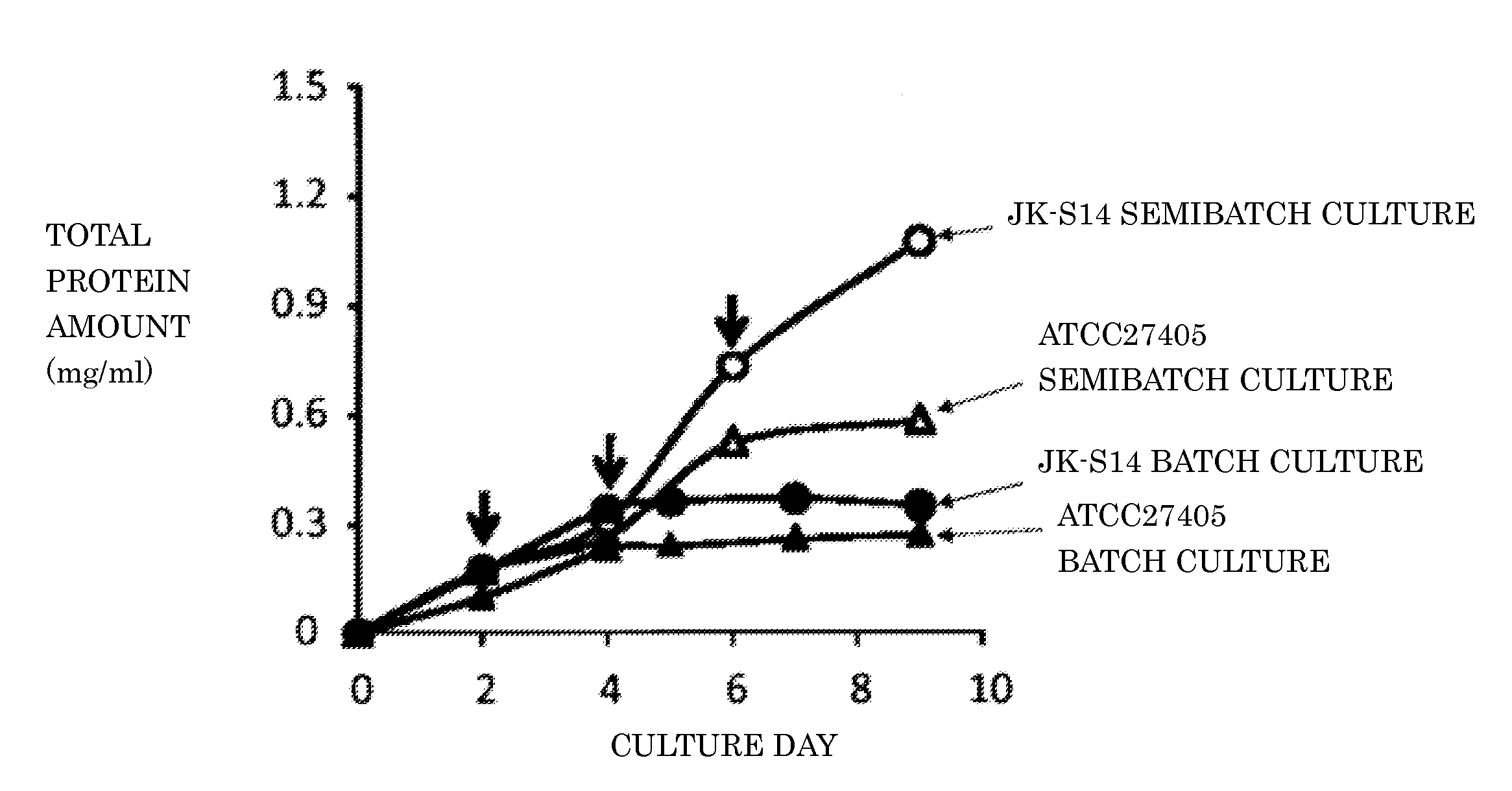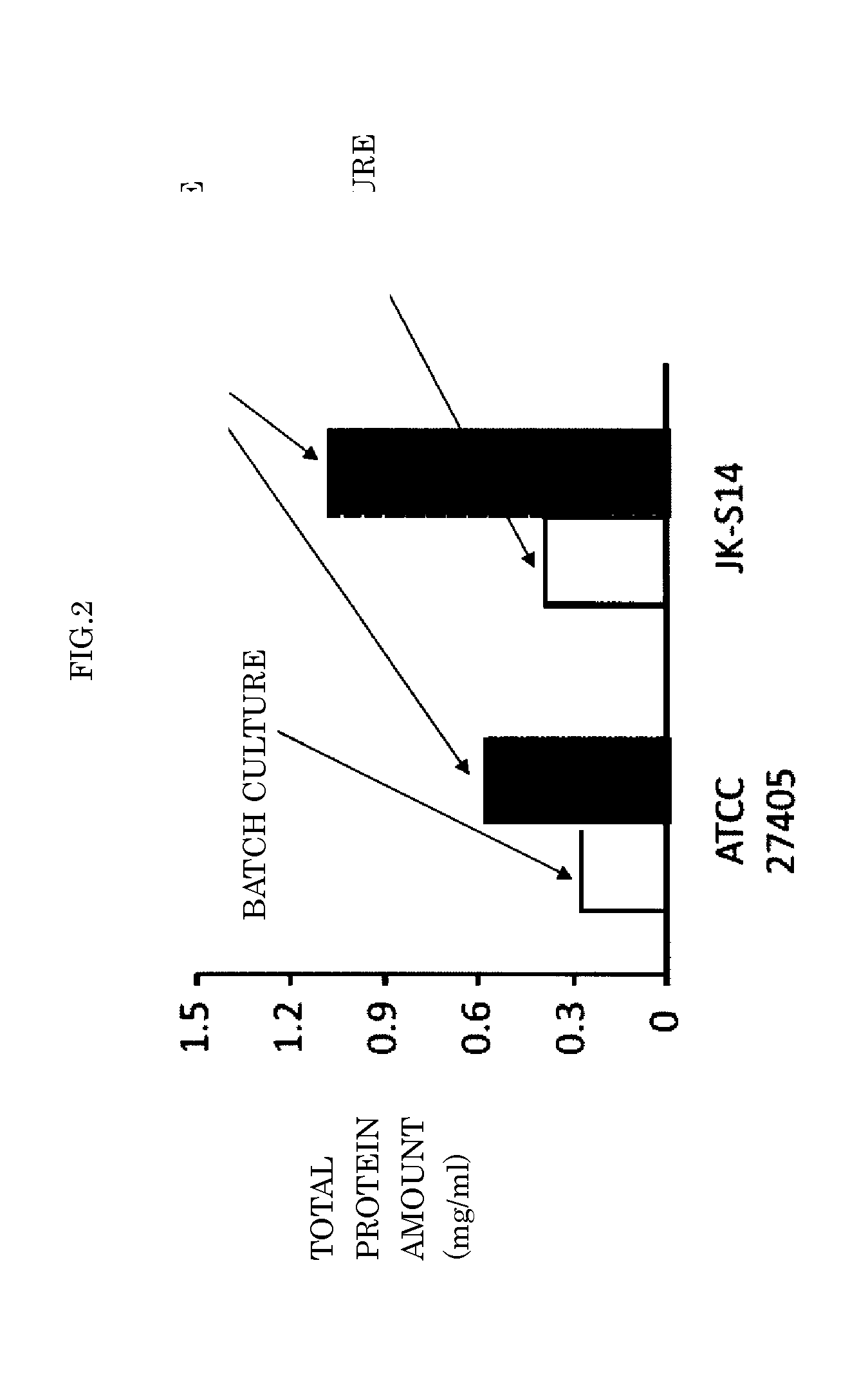Method for producing cellulolytic enzyme using clostridium microorganism and method for culturing and proliferating clostridium microorganism
a technology of clostridium microorganisms and cellulolytic enzymes, which is applied in the field of producing cellulolytic enzymes using clostridium microorganisms and a method for culturing and proliferating clostridium microorganisms, can solve the problems of insufficient cellulolytic enzyme saccharification, and insufficient starch saccharification technology, etc., to achieve the effect o
- Summary
- Abstract
- Description
- Claims
- Application Information
AI Technical Summary
Benefits of technology
Problems solved by technology
Method used
Image
Examples
embodiment 1
[0040]Embodiment 1 of the present invention is a method for producing a cellulolytic enzyme, where clostridium microorganisms that have cellulose utilizability and secrete cellulolytic enzyme are cultured. In the cultivation, after clostridium microorganisms digest an utilizable carbon source, addition of carbon source is repeated for accumulating cellulolytic enzymes in the culture medium during cultivation.
[0041]The clostridium microorganisms that have cellulose utilizability and secrete cellulolytic enzyme is microorganisms preferably having abilities to utilize cellulose and secrete cellulosome being a cellulolytic enzyme. The clostridium microorganism having cellulose utilizability and secreting cellulosome is specifically a microorganism belonging to clostridium thermocellum or clostridium cellulovorans, and is preferably clostridium thermocellum. As to a bacterial strain of the clostridium thermocellum, ATCC27405 strain, ATCC31549 strain, clostridium thermocellum JK-S14(NITE ...
embodiment 2
[0080]Embodiment 2 of the present invention is a method for producing cellulolytic enzyme, wherein clostridium microorganisms that have cellulose utilizability and secrete cellulolytic enzyme are cultured for producing cellulolytic enzyme, and after the clostridium microorganisms digest an utilizable carbon source, addition of the carbon source is repeated.
[0081]Instead of the semibatch method employed by Embodiment 1, Embodiment 2 employs a continuous culture method that the culture medium is replaced at the time of supply of the carbon source.
[0082]In the continuous culture method, fresh culture solution is supplied to a culture system and same amount of the culture solution is simultaneously withdrawn. This method is suitable for collecting active component secreted in the culture solution and removing harmful component. However, when new culture solution is supplied, a cellulosome / carbon source-bound unit is formed because the cellulosome is bound with the carbon source. In orde...
embodiment 3
[0084]Embodiment 3 of the present invention is a method for culturing and proliferating clostridium microorganisms wherein after an utilizable carbon source is digested by the clostridium microorganisms, addition of the carbon source is repeated.
[0085]The culture may be carried out under the same condition and method with those of Embodiments 1 and 2 and clostridium bacteria are separated from the culture solution by the ordinary methods.
PUM
| Property | Measurement | Unit |
|---|---|---|
| concentration | aaaaa | aaaaa |
| concentration | aaaaa | aaaaa |
| crystal structure | aaaaa | aaaaa |
Abstract
Description
Claims
Application Information
 Login to View More
Login to View More - R&D
- Intellectual Property
- Life Sciences
- Materials
- Tech Scout
- Unparalleled Data Quality
- Higher Quality Content
- 60% Fewer Hallucinations
Browse by: Latest US Patents, China's latest patents, Technical Efficacy Thesaurus, Application Domain, Technology Topic, Popular Technical Reports.
© 2025 PatSnap. All rights reserved.Legal|Privacy policy|Modern Slavery Act Transparency Statement|Sitemap|About US| Contact US: help@patsnap.com



